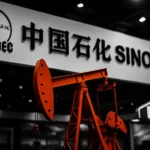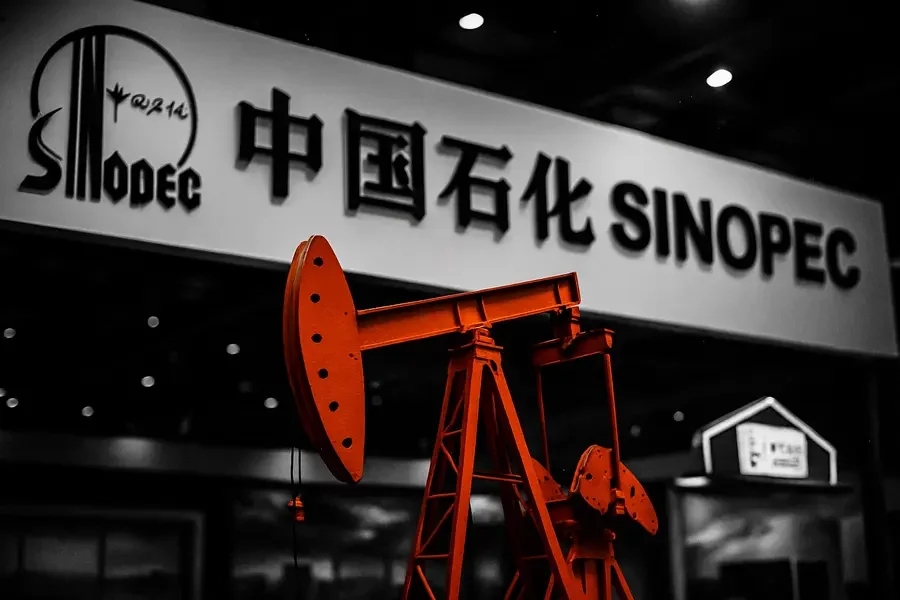WASHINGTON, October 10, 2025 – The US imposed sanctions on about 100 entities including a Chinese oil terminal that handles one-fifth of Sinopec’s crude imports for Iranian oil trade. The sanctions target critical infrastructure in China’s energy supply chain, potentially disrupting operations for the state-owned oil giant and raising compliance costs.
- US sanctions Chinese terminal handling 20% of Sinopec imports
- About 100 entities, vessels sanctioned for Iranian oil trade
- Second Chinese terminal targeted since January sanctions wave
Market Impact and Industry Context
The sanctions specifically target a unit at Rizhao Port in Shandong province, which sources said handles approximately 20% of China Petroleum & Chemical Corp’s (Sinopec) crude oil imports1. The measures represent an escalation in the Trump administration’s pressure campaign against Iranian oil flows to China, the world’s largest crude importer.
This marks the second Chinese oil terminal sanctioned this year, following previous measures that have already targeted 166 ships tied to Iranian oil trade since January2. The sanctions also hit Shandong Jincheng Petrochemical, an independent Chinese refinery, among other entities.
Treasury Department Action
Treasury Secretary Scott Bessent said the sanctions demonstrate the administration’s commitment to cutting off Iran’s oil revenue streams3. The measures freeze any US-based assets of the targeted entities and prohibit American individuals and companies from conducting business with them.
The sanctioned terminal is described as “a major cog in global crude flows,” highlighting the potential broader impact on international energy markets4. The Rizhao Port unit’s designation could force Sinopec to find alternative import channels, potentially increasing operational costs and supply chain complexity.
Strategic Implications for China’s Energy Sector
The targeting of infrastructure handling significant volumes for Sinopec underscores the US strategy of pressuring Chinese state-owned enterprises indirectly through their supply chains. Independent refineries, known as “teapots” in industry parlance, have been particular focuses of recent sanctions rounds.
China has emerged as Iran’s largest oil customer despite US sanctions, with Iranian crude often sold at discounted prices to Chinese buyers. The latest measures aim to complicate these transactions by targeting the physical infrastructure that enables oil imports.
Outlook and Industry Response
The sanctions come as the Trump administration seeks to maximize economic pressure on Iran through what officials call a “maximum pressure” campaign. Industry analysts expect Chinese companies to seek workarounds, potentially involving ship-to-ship transfers and alternative payment mechanisms.
The designation of major port infrastructure represents a significant escalation from previous sanctions that primarily targeted shipping vessels and smaller trading companies. This approach could have broader implications for legitimate crude trade if it creates compliance uncertainties for international energy companies.
Not investment advice. For informational purposes only.
References
1“Latest US sanctions on Iranian oil deal blow to China’s Sinopec”. Reuters. Retrieved October 10, 2025.
2“New US sanctions target 50 people, companies and ships for”. ABC News. Retrieved October 10, 2025.
3“New US sanctions take aim at Iran’s oil and gas trade”. AP News. Retrieved October 10, 2025.
4“US Hits Firms Moving Iranian Oil and Major China Crude Terminal”. Bloomberg. Retrieved October 10, 2025.
5“US imposes sanctions on China refinery, others for Iran oil purchases”. Reuters. Retrieved October 10, 2025.
6“US imposes sanctions on China refinery, others for Iran oil purchases”. Middle East Online. Retrieved October 10, 2025.
7“US Sanctions China Rizhao Port Unit, Hurting Iran Oil Flows”. Financial Post. Retrieved October 10, 2025.

